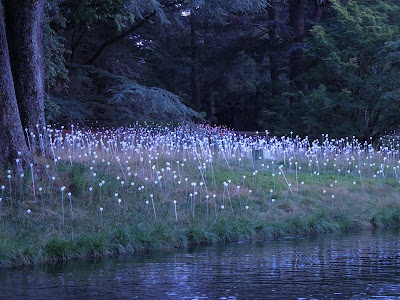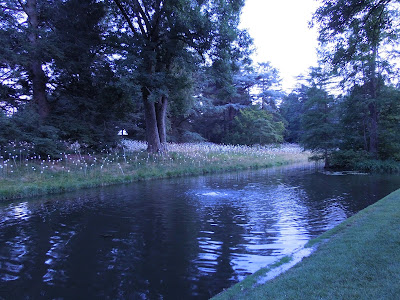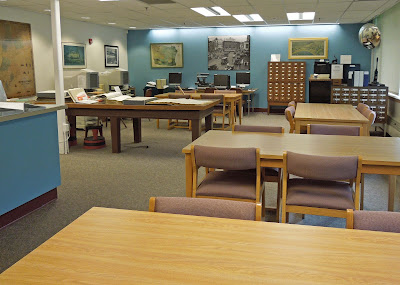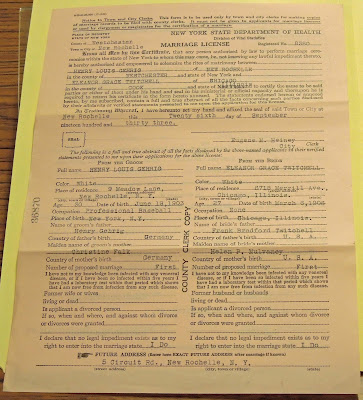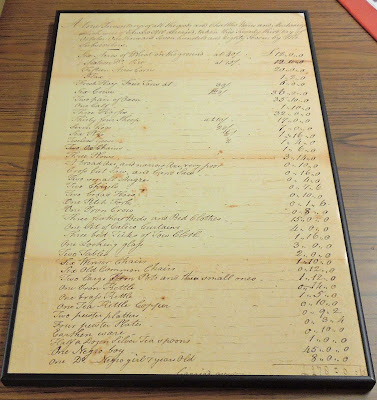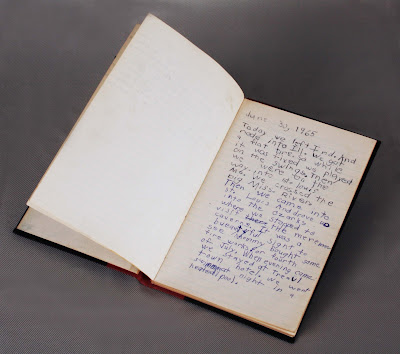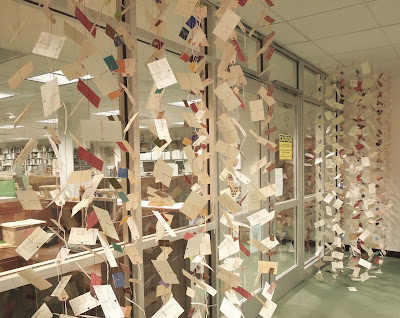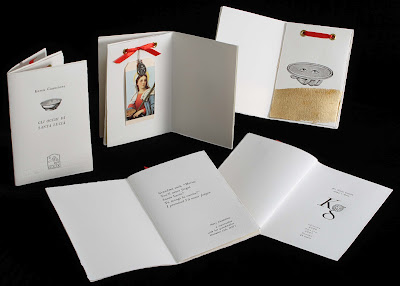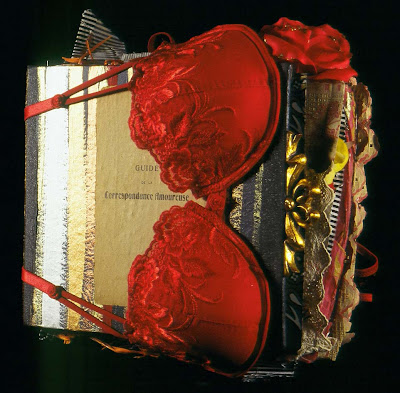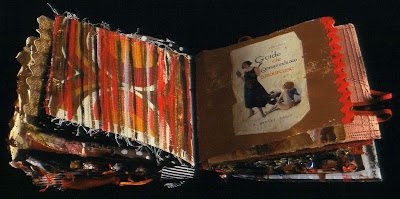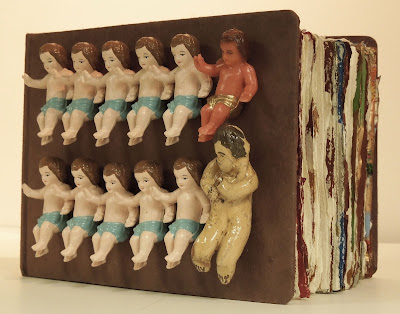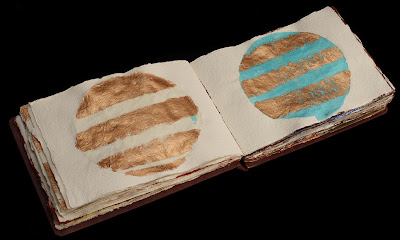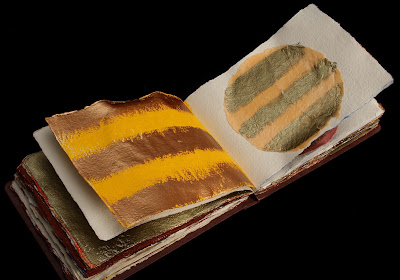Introduction
I've said it before, but it bears repeating -- one of the top attractions of being an archivist at Plainfield Public Library is the ability to work on a wide variety of interesting projects. Another favorite facet is shepherding a project from beginning to end. Taking the time to know a small collection (or even a sizable one, such as the Detwiller Blueprints) intimately has been key to writing detailed and informative finding aids for researchers interested in these collections.Recently, I've had the pleasure of inventorying, preserving, and processing a special collection that spans the categories of archives and museum collections. The Marjorie and Roger Vail Family Papers (1772-2001) comprises much more than what we typically describe as "papers." Some examples include hand towels embroidered in 1772; a family bible dated 1791; early daguerreotypes, tintypes, cabinet cards, and cartes des vistes; Civil War correspondence; 19th century wedding dresses; an 1876 harmonica; White Plains Regents Exams results from 1917; World War I postcards and photographs; books; sketches; maps; and genealogical research. My favorite materials are the hundreds of postcards and the Civil War correspondence, which describes in detail David Vail's experience of the war.
About the Vails
Marjorie and Roger (sister and brother) were the last descendants in the Roy G. Vail line. They very generously gave their family's large (approximately 39 boxes) and diverse collection of records to the Plainfield Public Library in several installments during the 1990s and early 2000s. You might recognize the Vail name because a few of the family members left their mark on New Jersey and America as a whole. They include Stephen Vail, owner of the Speedwell Ironworks; Alfred Vail, arguably the inventor of Morse Code and co-inventor of the telegraph; and Theodore Vail, creator of the ATT monopoly (and cousin to Alfred Vail). The Plainfield Vails are distantly related to their Morris County cousins via their common ancestor, Thomas Vail (1620-1687). Below are samples of the many family trees in the genealogy series. |
| From PPL, Vail Collection 2012 |
Vail Family Tree; undated; "Marjorie and Roger Vail Family Papers" collection; Local History Department, Plainfield Public Library, Plainfield, New Jersey. Photograph © Debra Schiff.
 |
| From PPL, Vail Collection 2012 |
Vail Family Tree; 1938; "Marjorie and Roger Vail Family Papers" collection; Local History Department, Plainfield Public Library, Plainfield, New Jersey. Photograph © Debra Schiff.
Processing, Preservation, and Arrangement
 |
| From PPL, Vail Collection 2012 |
Collection in Process; 2012; "Marjorie and Roger Vail Family Papers" collection; Local History Department, Plainfield Public Library, Plainfield, New Jersey. Photograph © Debra Schiff.
The first two bays from the right in the photo above show the range of size and shape of the materials in the collection. The red binders in the second bay hold photographs that had previously been sleeved and numbered for use in exhibits (both online and in-library). Since I took that photo, I have rearranged and re-housed some materials, including the addition of another binder of nearly 400 postcards. We also have ordered some custom boxes to help better preserve the wedding dresses and other items of unusual size (such as the sewing box that held costume jewelry in a hidden compartment).
In addition to processing the wedding dresses, I preserved an incredibly detailed black lace dress. Fashioned from black taffeta and net with ornate glass beading and embroidery throughout, the evening dress is said to have belonged to "Grandma Stiehl," (on Marjorie and Roger Vail's mother's side). The original package also included a head/neckband of the same material. The woman who wore the dress was petite, to be sure, and strong -- the dress is quite heavy due to all the glass beads. The five photos below show some of the great detail of the dress.
| From PPL, Vail Collection 2012 |
Here, I gently placed some acid-free tissue in the sleeve to show some of the detail.
| From PPL, Vail Collection 2012 |
| From PPL, Vail Collection 2012 |
| From PPL, Vail Collection 2012 |
| From PPL, Vail Collection 2012 |
For the five photos above:
Evening Dress; Undated; "Marjorie and Roger Vail Family Papers" collection; Local History Department, Plainfield Public Library, Plainfield, New Jersey. Photograph © Debra Schiff.
I processed and preserved the large textiles in the Plainfield Room, which is open to the public and serves as a reading room for researchers. The room is located downstairs on the south west side of the fountain (which resembles a shallow swimming pool due to its aqua blue-painted interior; it is usually empty, but filled during certain events). When I worked on the dresses, I had my share of company from co-wokers to patrons interested in these beautiful bits of Plainfield's history.
The Vails donated numerous photographs of family members, houses, and travel destinations. Because I had taken Gary Saretsky’s Dating 19th Century Portrait Photographs workshop back in April, I was able to identify and date within a few years many of the early images in the collection. Below is an example of an ambrotype in a hinged case. I've dated it c. 1860-1870s due to the highly ornate and patriotic design of the copper mat and preserver. It is interesting to note that the 30-star flag in the design only existed between 1848 and 1851. I suspect that it was for the sake of design and space that the artist used that flag, especially when the bottom section is magnified and the date "July 4, 1776" appears. The subjects are Elise Ditzel Leis and Baby Charles.
 |
| From PPL, Vail Collection 2012 |
The case is ornate down to its latches, as well.
 |
| From PPL, Vail Collection 2012 |
 |
| From PPL, Vail Collection 2012 |
For the three photos above:
Photograph, Elise Ditzel Leis and Baby Charles; c. 1860s; "Marjorie and Roger Vail Family Papers" collection; Local History Department, Plainfield Public Library, Plainfield, New Jersey. Photograph © Debra Schiff.
When preserving the photos in their cases, I wrapped them individually in acid-free, unbuffered tissue and placed them in a smaller box to accommodate the odd sized items. I also ran into round frames such as the one below. I made an acid-free, unbuffered tissue cradle in a small box to fit the round frame.
 |
| From PPL, Vail Collection 2012 |
Photograph, Robert Leis; undated; "Marjorie and Roger Vail Family Papers" collection; Local History Department, Plainfield Public Library, Plainfield, New Jersey. Photograph © Debra Schiff.
After all the preservation and processing, it was necessary to address the arrangement (organization) of the collection. While most of the collection had a nice order to it, a portion didn't. It was time to impose some order upon it. I also consulted with the Senior Archivist and Dept. Head Sarah Hull to determine exactly the series we would include. Below is a photo of my notes on the topic.
 |
| From PPL, Vail Collection 2012 |
Vail Series Arrangement; 2012; "Marjorie and Roger Vail Family Papers" collection; Local History Department, Plainfield Public Library, Plainfield, New Jersey. Photograph © Debra Schiff.
Sarah quickly divided my list of item types into six main series, which helped me to re-sort the Excel spreadsheet I had used for the inventory. After I put all the "like" items together by series, I began to do some re-housing and rearrangement accordingly. By re-organizing the collection in this way, it will greatly help researchers to find materials by category when the finding aid is published (likely later in 2013).
I hope that when the collection is opened for research, we can put together a traveling exhibit, perhaps displayed at the Morris Museum (they have such lovely costume exhibits, and the Vail cousin-ship would be a nice tie-in). Until then, I'll be continuing to arrange, and later describe the Marjorie and Roger Vail Family Papers at the Plainfield Public Library.











